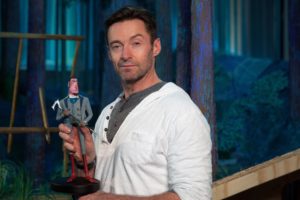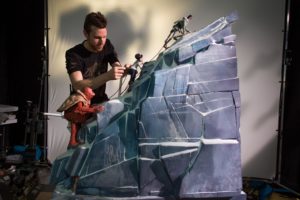Portland, Oregon, Apr 3 (EFE).- While much of the filmmaking industry is getting carried away with digital processing and the most advanced special effects, at Laika Studios a group of crazy people – whose current project is “Missing Link” – continue to focus on small-scale animation and the delicate and very complex technique of “stop-motion” in their films.
The creators of the acclaimed “Coraline” (2009) and “Kubo and the Two Strings” (2016) at this point are recounting the classic adventures and the indomitable spirit of explorers in “Missing Link,” whose cast includes the voices of Hugh Jackman, Zoe Saldaña and Zach Galifianakis.

In this feature animated film, Sir Lionel Frost, an elegant and tenacious British adventurer, receives a letter from a mysterious creature who seems to be humanity’s so-called “missing link.”
“It’s a little like ‘Indiana Jones,’ a little like ‘Sherlock Holmes,’ and little like ‘Planes, Trains and Automobiles’ and a little like ‘Around the World in 80 Days,'” said director Chris Butler in a press visit in which EFE took part to Laika Studios.
“It’s a big, colorful and epic adventure,” he added.
More than 1,500 km (930 mi.) north of Hollywood, Laika Studios creates and hones its own animation secrets in Portland, Oregon, one of the country’s most progressive and culturally vibrant cities and which also had an enviable natural environment full of forests and mountains.
Founded in 2005 by Travis Knight, the son of Nike owner Phil Knight, the studio is a testament to patience, precision and stop-motion, an animated-film making technique in which objects are physically manipulated in small increments between individually photographed frames so they appear to exhibit independent motion when the series of frames is played back quickly.
Stop-motion animation using plasticine figures is called clay animation or “clay-mation” and in using humans is sometimes called pixilation or pixilate animation.

The film technique was pioneered by Georges Melies and Segundo de Chomon, among others, but it requires very careful manipulation of the objects being animated so that the desired effect of their being “alive” is not lost.
“Sometimes, during filming the animators change (a character’s) face up to 24 times for one second of film,” said John Craney, who supervises the puppets and puppetry techniques at Laika Studios.
Each character – whether it’s the refined Sir Lionel or the playful monkey-like Mr. Link – has a number of miniature and movable puppets, as well as hundreds of interchangeable faces so that the filmmakers can give them a huge number of expressions.
Three-D printers are indispensable for creating exactly the right items, body parts or faces that each character needs.
There can be 110 different sets and more than 106,000 different faces for characters in a film made up of 1,486 shots such as “Missing Link.” Arianne Sutner, the film’s producers, said that Laika Studios has a “unique identity” among other production giants such as Pixar.
“I’m very proud of our position … We’re doing very personal films … There are incredible (studios) here and they’re doing very good work, but I don’t think anyone is doing exactly what we’re doing,” she said, referring to her films as “small and perfect gems.”
Laika Studios is definitely doing something right, as far as the film industry is concerned, having had all its films to date – “Coraline,” “ParaNorman,” “The Boxtrolls” and “Kubo and the Two Strings” – nominated for Oscars in the Best Animated Film category, and where the latter won in 2016.
